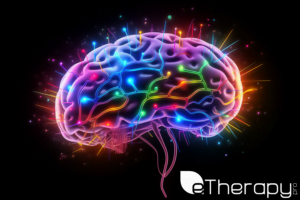 In a world where emotions surge and ebb with the ephemerality of a tweet, a recurring question haunts many — “Do I have anger issues?” Anger, a powerful and raw emotion, often sweeps through us unexpectedly, leaving a trail of questions in its wake. But beneath this boiling emotion lie layers of pain, unresolved trauma, and pent-up stress that often go unnoticed until they explode. This article aims to shed light on the intricate web of anger, offering insights into the reasons behind its fiery outbreak and presenting actionable strategies through anger management therapy.
In a world where emotions surge and ebb with the ephemerality of a tweet, a recurring question haunts many — “Do I have anger issues?” Anger, a powerful and raw emotion, often sweeps through us unexpectedly, leaving a trail of questions in its wake. But beneath this boiling emotion lie layers of pain, unresolved trauma, and pent-up stress that often go unnoticed until they explode. This article aims to shed light on the intricate web of anger, offering insights into the reasons behind its fiery outbreak and presenting actionable strategies through anger management therapy.
Recognizing the depth and complexity of our emotions is the first step towards self-awareness and healing. As you traverse through this guide, you’ll uncover the underlying causes of your anger, the triggers that set it off, and the practical exercises for anger management tailored to address and temper these fiery outbursts. Whether you’re seeking therapy for anger or simply want to understand the nuances of the intermittent anger disorder, this comprehensive guide aims to equip you with the knowledge and tools to navigate the tumultuous waters of anger, leading to a calmer, more centered you.
Understanding the Roots of Anger
Anger, as powerful and consuming as it may feel, is rarely the primary emotion. More often than not, it acts as a shield, masking deeper, more vulnerable feelings. If we truly wish to answer the haunting question of “why am I so angry?”, we must dare to look beneath the surface of this ferocious emotion and understand its origins.
The Pain Beneath the Rage
Each time anger surges, it carries with it echoes of past hurts, unresolved traumas, and suppressed memories. Imagine a wound that’s never healed, festering and raw beneath a bandage. Anger can be seen as that bandage – a protective layer that shields us from confronting the pain directly. It’s easier, and sometimes even instinctual, to lash out in fury than to admit vulnerability or acknowledge deep-seated hurt. Engaging in anger management therapy allows individuals to carefully peel back these layers, revealing the wounds underneath, and beginning the crucial process of healing.
The Power of Accumulated Stress
Our daily lives are often punctuated by myriad stressors – demanding jobs, financial strains, and relationship challenges, to name a few. Each stressor, though seemingly insignificant on its own, accumulates, much like droplets in a steadily filling bucket. And when that bucket overflows, the result is often an explosive outburst of anger, seemingly out of proportion to the immediate provocation. It’s essential to recognize that such outbursts aren’t mere reactions to a singular event, but the culmination of prolonged stress and frustrations. Exercises for anger management often emphasize the importance of acknowledging and addressing these stressors before they reach a boiling point.
Anger as a Reflection
Anger can sometimes act as a mirror, reflecting deeper issues and unresolved conflicts within us. Whether it’s a long-standing insecurity, feelings of inadequacy, or unresolved childhood traumas, our anger offers glimpses into these hidden corners of our psyche. By understanding that our anger is, in many ways, a reflection of these deeper seated issues, we open the door to addressing them head-on. CBT therapy for anger, in particular, emphasizes the importance of this self-awareness, guiding individuals to recognize, understand, and eventually resolve the root causes of their anger.
Recognizing Triggers: The First Step to Resolution
Every explosion of anger is typically preceded by a spark, a trigger that sets off the emotional chain reaction. Recognizing these triggers is not just essential – it’s transformative. Being able to predict when and why anger might emerge gives one an edge, a brief moment to choose a different reaction. And that momentary pause, that breath of clarity, can make all the difference. So, what are these triggers, and how do we recognize them?
Common Triggers
There are certain circumstances or events that tend to provoke anger across a broad spectrum of individuals. These common triggers, while not exhaustive, provide a starting point in the journey towards self-awareness and anger management:
- Fatigue: An overworked mind and body tend to have a shorter fuse. Lack of rest and chronic fatigue can amplify irritability.
- Personal Problems: Family disputes, relationship issues, or health concerns can serve as constant sources of frustration and stress.
- External Events: Unexpected challenges like traffic jams, work-related stresses, or even something as simple as a spilled coffee can be enough to ignite anger in an already stressed individual.
- Perceived Threats: Feeling disrespected, undermined, or threatened can quickly escalate to anger, especially if it challenges one’s self-worth or identity.
- Unmet Needs: When our needs, be it emotional, physical, or social, are not met, it can lead to feelings of frustration and eventual anger.
Personalized Triggers
While the triggers mentioned above are common across many individuals, it’s crucial to understand that anger is a deeply personal emotion. What infuriates one person might be trivial to another. Each individual has their own set of personalized triggers molded by their past experiences, personal values, and unique life circumstances.
One effective strategy to uncover these hidden triggers is to engage in introspection. Taking a moment after an anger episode to write down the specifics of the situation can be revealing. Note down the environment, time of day, the conversation, and any other details you recall. Over time, patterns will emerge, and previously unnoticed triggers will come to light. Understanding these patterns makes it easier to pinpoint the underlying reasons for pain or anger, leading to more effective therapy or counseling sessions.

Intermittent Anger Disorder: More Than Just Frequent Rage
In the vast spectrum of emotions that humans experience, anger stands out as one of the most intense and, at times, overwhelming. However, while everyone feels anger from time to time, not all expressions of this emotion are the same. A specific and more severe manifestation of anger is Intermittent Anger Disorder (IED), which goes beyond the occasional burst of rage that most people might feel.
What is Intermittent Anger Disorder?
Intermittent Anger Disorder, often abbreviated as IED, is a behavioral disorder characterized by sudden and intense episodes of anger that are disproportionate to the situation at hand. These outbursts can be violent, resulting in harm to oneself or others, and often lead to significant distress in personal, occupational, or social areas of life. The roots of IED can be traced back to a combination of biological, environmental, and personal factors. Individuals suffering from IED often feel a sense of remorse or guilt post their episodes, but without proper therapy or counseling, they might find it challenging to control these outbursts.
Distinguishing Normal Anger from IED
Understanding the distinction between general anger and IED is crucial for both the individuals affected and those around them. While anger is a natural emotional response to perceived threats or frustrations, IED is characterized by the frequency, intensity, and impulsivity of the outbursts.
- Frequency: While everyone can get angry occasionally, individuals with IED experience frequent and recurrent episodes of rage.
- Intensity: The anger in IED is often explosive, leading to physical or verbal aggressions that are disproportionate to the provocation.
- Impulsivity: Unlike the typical buildup of anger which might give some warning signs, IED outbursts can come out of the blue, leaving little room for intervention.
Moreover, the aftermath of an IED episode is telling. While a person experiencing general anger might simmer down and move on relatively quickly, someone with IED might face significant remorse, guilt, or even confusion about their intense reaction.
To encapsulate the profound difference between holding onto anger and letting it dictate one’s actions, the wise words come to mind:
Holding onto anger is like drinking poison and expecting the other person to die. – Buddha
Recognizing and understanding IED is the first step to seeking help. And while the journey might be challenging, with the right therapy and support, individuals can learn to manage and control their outbursts, leading to healthier relationships and a more balanced emotional life.
Unpacking the Benefits of Anger Management Therapy
Anger, as a fundamental human emotion, serves a purpose. It signals when something is amiss, spurs us to address injustices, and can even mobilize us to take action. However, when anger starts dictating our reactions, impairing our relationships, and overshadowing other emotions, it becomes vital to address it. Anger management therapy offers a structured and effective approach to understanding, processing, and responding to anger in a healthier manner. In this section, we’ll delve into the nuances and benefits of anger management therapy.
The Goal of Therapy
A common misconception is that anger management therapy aims to eliminate anger. This couldn’t be further from the truth. Instead, the goal of therapy is to help individuals recognize the triggers and signs of their anger and equip them with tools and coping mechanisms to respond constructively.
The process includes:
- Awareness: Recognizing and understanding the reasons behind the anger.
- Reflection: Looking inward to understand the patterns and triggers.
- Skills Development: Learning effective techniques to handle anger, such as deep breathing, countering negative thoughts, and seeking alternative perspectives.
- Resolution: Finding healthier ways to express anger without causing harm or escalating conflicts.
- Prevention: Proactively addressing potential triggers and creating an environment conducive to calmness and understanding.
Thus, therapy doesn’t aim to suppress or eliminate anger but rather to channel it in a way that’s productive and not destructive.
CBT Therapy for Anger
Cognitive Behavioral Therapy (CBT) has emerged as one of the most effective methods for anger management. Rooted in the idea that our thoughts, feelings, and behaviors are interconnected, CBT aims to challenge and reshape negative thought patterns and behaviors.
The methodology of CBT for anger includes:
- Cognitive Restructuring: This involves identifying negative thought patterns that contribute to anger and consciously replacing them with more rational and positive thoughts.
- Problem-solving: Instead of getting angry about a situation, CBT teaches individuals to address the root cause of the problem.
- Skills Training: This might involve communication strategies, assertiveness training, or even relaxation techniques to handle anger.
- Exposure Therapy: Gradually and safely confronting situations that elicit anger, thereby building resilience over time.
The benefits of CBT for anger are manifold:
- Improved Self-awareness: By regularly analyzing and challenging one’s thoughts, individuals become more aware of their thinking patterns.
- Better Relationships: As individuals react less impulsively and aggressively, relationships often see a marked improvement.
- Reduced Physical Stress: Chronic anger can lead to health issues. By managing it effectively, one can reduce the risk of related health problems.
- Enhanced Quality of Life: As anger is managed and channeled positively, individuals often report an overall improvement in their quality of life.
Harnessing the power of anger for constructive purposes, rather than letting it dominate our reactions, is a journey. While traditional therapeutic sessions have proven effective, the rise of digital platforms like eTherapyPro offers a more accessible solution. As a reliable online counseling platform, it ensures individuals have immediate support, especially when navigating intense emotions like anger. With professional guidance just a click away, managing and understanding anger becomes a more attainable goal, setting the stage for improved well-being and harmonious relationships. As we continue our exploration into anger’s intricacies, it’s essential to recognize the myriad resources available to help navigate its challenges.

Practical Exercises for Anger Management
Following the path of understanding and managing anger, it’s time to equip ourselves with actionable tools. The intricacies of anger, as intense and overwhelming as they might be, can be tamed with the right exercises. These techniques not only act as preventive measures but also as immediate interventions during a surge of rage. Grounding oneself through these exercises helps regain control, ensuring that anger, though a natural emotion, does not dictate our responses.
Breathing Techniques
As anger begins to bubble, our heart rate increases, and our breath becomes shallow and rapid. Breathing exercises offer an immediate way to counteract these physiological responses:
Deep Belly Breathing: Place one hand on your chest and the other on your stomach. Breathe in deeply through your nose, allowing your diaphragm to expand (your stomach should rise more than your chest). Exhale slowly through pursed lips. Repeat this 3-5 times, focusing on the sensation of breathing.
Counted Breathing: Inhale deeply while counting to four, hold for a count of four, and then exhale over a count of four. This exercise helps in slowing down the rush of emotions, giving the brain a moment to recalibrate.
Visualization Techniques
The mind has a powerful influence over our emotional state. Visualization techniques channel this power by mentally transporting us to a calmer place:
Safe Space Visualization: Close your eyes and imagine a place where you feel utterly at peace – it could be a beach, a mountaintop, or a cherished childhood spot. Focus on the details – the sounds, the smells, the sensations. As you immerse yourself in this safe space, allow your anger to melt away.
Color Visualization: Envision your anger as a bright, fiery color. With each calming breath, imagine this color becoming cooler, transitioning from red to orange, then blue, and finally a calming purple or green.
Physical Activities
Physical exertion offers a constructive outlet for the adrenaline rush accompanying anger:
Brisk Walking: Sometimes, merely stepping away from the trigger and taking a brisk walk can help. The rhythmic motion of walking, paired with fresh air, can be incredibly grounding.
Punching a Pillow: If the surge of anger demands a more immediate physical outlet, punching a soft object like a pillow can provide a quick release without causing harm.
Engaging in Sports: Channeling anger into sports, whether it’s shooting some basketball hoops, sprinting, or even a rigorous gym session, can be cathartic. The physical exertion not only consumes the excess energy but also releases endorphins, the body’s natural mood elevators.
For every minute you remain angry, you give up sixty seconds of peace of mind. – Ralph Waldo Emerson
By integrating these practical exercises into our daily lives, we not only regain those moments of peace but also fortify ourselves against the overwhelming tide of anger.
Beyond Therapy: Everyday Practices to Keep Anger at Bay
While therapy provides specialized tools and techniques to address anger, it’s equally important to embrace practices in our daily lives that bolster our emotional well-being. The connection between body and mind is undeniable. As we’ve explored strategies within therapeutic confines, let’s now broaden our horizon to day-to-day habits and rituals that play a vital role in anger management.
The Role of Diet and Physical Health
What we consume and how we treat our body has a direct impact on our emotional equilibrium.
Sugary Foods and Caffeine: High intake of sugars and caffeine can lead to mood swings and irritability due to rapid spikes and crashes in blood sugar levels. Moderating the intake of these can help maintain a more even temper.
Balanced Diet: A balanced diet, rich in whole foods, vitamins, and minerals, especially magnesium, can help in promoting a calm demeanor. Foods like leafy greens, nuts, seeds, and whole grains can be particularly beneficial.
Regular Exercise: Physical inactivity can lead to the accumulation of stress and tension. Regular exercise acts as a release valve for these pent-up emotions, channeling them productively and releasing mood-boosting endorphins.
Meditation and Mindfulness
The ancient practices of meditation and mindfulness have gained modern relevance, especially in managing emotions like anger.
Meditation: Regular meditation sessions, even if for just a few minutes daily, can cultivate an inner calm. Over time, this practice can lead to increased patience and reduced impulsiveness, mitigating the intensity and frequency of anger outbursts.
Mindfulness: Being present in the moment, mindfulness allows us to be more aware of our emotional responses. By acknowledging our feelings without judgment, we can choose our reactions, creating a buffer between stimulus and response.
Speak when you are angry – and you’ll make the best speech you’ll ever regret. – Ambrose Bierce
Inculcating these everyday practices, paired with therapy, acts as a comprehensive shield, equipping us to face life’s challenges with grace and equanimity.
Seeking Professional Help: When and Why?
In our pursuit of understanding and managing anger, there comes a point where introspection and daily practices might not be enough. This doesn’t reflect a personal failing; instead, it indicates the depth and intricacy of emotions we are grappling with. Recognizing when it’s time to seek external guidance is a testament to self-awareness and strength.
Recognizing the Signs
Understanding when anger crosses the line can be challenging. However, a few indicators suggest that professional assistance might be beneficial:
Frequency and Intensity: If outbursts become more frequent or intense over time, it could be an alarm bell.
Strained Relationships: When anger starts affecting personal and professional relationships, it’s a clear sign that intervention is required.
Physical Repercussions: Experiencing frequent headaches, digestive issues, or insomnia linked to anger episodes.
Regretful Actions: If post-anger reactions often lead to regret, like breaking objects or lashing out verbally.
Dependence on Substances: Turning to alcohol, drugs, or other substances to cope with or suppress anger.
Feelings of Overwhelm: When anger feels uncontrollable or overwhelming, overshadowing other emotions and thoughts.
Benefits of Professional Intervention
Seeking therapy or counseling isn’t just about “fixing” anger. It’s about harnessing its energy productively. Here’s how professional intervention can make a difference:
Structured Approach: Therapists offer a structured path, tailor-made to individual needs, helping navigate the complexities of anger.
Safe Environment: Discussing anger in a judgment-free zone allows for honest introspection and revelation.
Techniques and Tools: Beyond discussions, therapists offer tools, techniques, and exercises that have proven effectiveness.
Accountability: Regular sessions create a sense of responsibility, encouraging individuals to actively engage in the healing process.
Unbiased Perspective: A third-party perspective can offer clarity, free from personal biases or emotions, illuminating patterns we might overlook.
Anger doesn’t demand action. When you act in anger, you lose self-control. – Joe Hyams
Seeking professional help ensures that we regain this control, channeling our anger into constructive avenues rather than letting it dominate our actions.
Conclusion:
In the intricate dance of emotions that color our lives, anger stands out with its fiery intensity. While it is an integral part of our emotional palette, the key lies not in suppression but in understanding and regulation. The upward trend in individuals seeking answers and help for anger management underscores the importance of addressing this powerful emotion.
From recognizing the roots of anger, understanding triggers, to differentiating between regular anger and disorders like IED, the journey towards managing anger is multifaceted. Effective management doesn’t mean extinguishing this emotion but rather channeling it constructively. Through therapeutic interventions like CBT, practical exercises, and everyday practices like mindfulness, we have the tools at our disposal to approach anger with a sense of mastery.
But, as the sayings go, every minute given to anger robs us of a minute of peace, and unchecked anger can lead to words and actions we may later regret. Recognizing when professional help is needed can be a game-changer.
In closing, remember that understanding and managing anger is a testament to personal strength and resilience. In a world filled with triggers and stressors, give yourself the grace to learn, evolve, and seek support when necessary. Your journey with anger is deeply personal, but you’re never alone in it. Embrace the tools and knowledge available, and walk the path of self-awareness and self-improvement with confidence.









